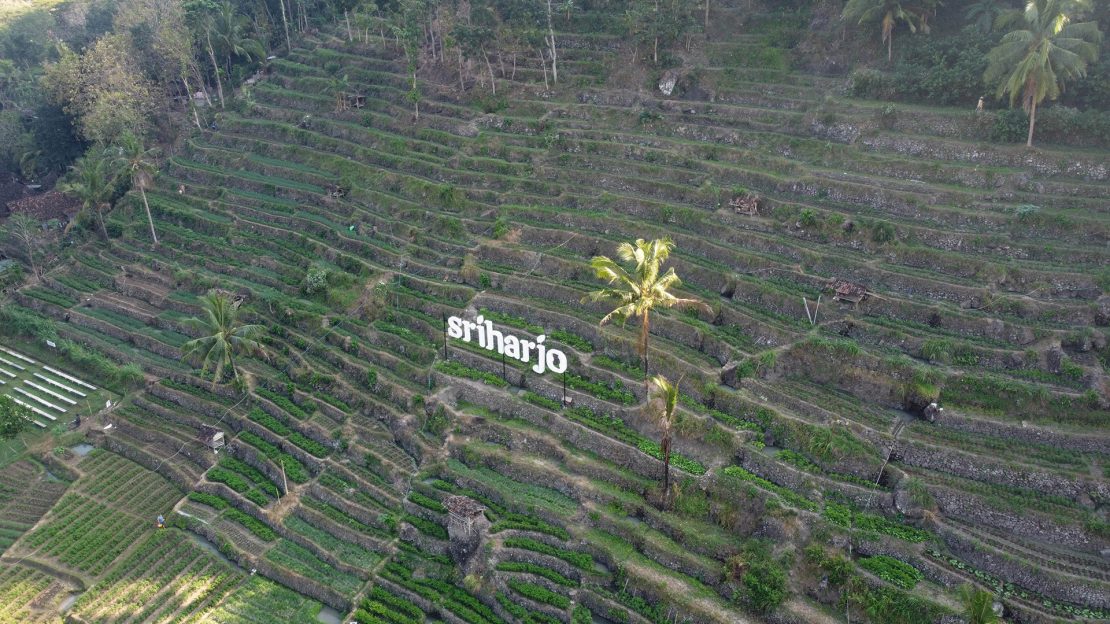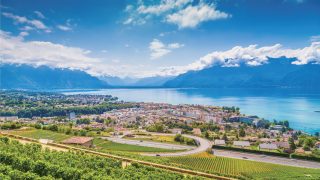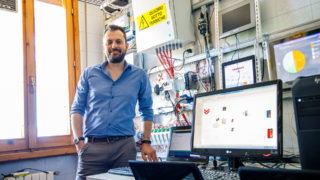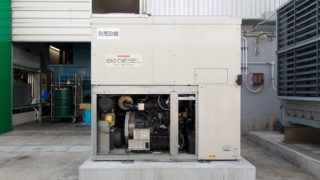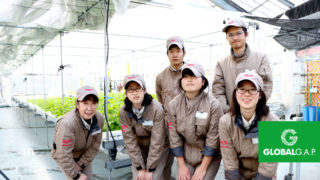Just south of Jogjakarta in central Java, nestled in the rolling hills of central Java is Sriharjo village. It looks like many of the other villages that dot the surrounding countryside but scratch the surface and you’ll find a difference. This village is a model of sustainability. Defended against the threat of climate change, it supports the land and the local community, provides for peoples’ lifestyles and nurtures valuable environmental knowledge.
Around the world, farmers and governments are faced with the challenge of ensuring food security while the global population rises and the area of agricultural land under cultivation declines. Challenges include urbanization, increasing use of agrochemicals, and land degradation. Meanwhile, fluctuations in climate and rainfall threaten to upend traditional agricultural patterns and severely disrupt food production. How to carry out sustainable agriculture in a way that protects the environment while improving productivity and considering the long-term management of natural resources is a major question in the 21st century.
Supporting better living
One team is tackling these diverse challenges. The Department of Agricultural and Biosystem Engineering at the Gadjah Mada University has embarked on a project to demonstrate a sustainable village. By implementing indigenous and modern technology, they aim to revitalize rural communities and create a model for sustainable rural living in the 21st century.
We have to look at the three pillars of sustainability: the economy, society and the environment and ensure that these are all developed in balance.
– Professor Lilik Sutiarso, Department of Agricultural and Biosystems Engineering, Gadjah Mada University
Professor Lilik Sutiarso of the Department of Agricultural and Biosystems Engineering at the Gadjah Mada University sums up the goal of the project this way: “We have to look at the three pillars of sustainability: the economy, society and the environment and ensure that these are all developed in balance.”
The Yanmar Environmental Sustainability Support Association (YESSA) is a partner in the project as part of its mission to deliver sustainable living solutions. Conducted over three years from 2018 to 2021, the project comprised of programs aimed at realizing village energy self-sufficiency and food security to improve quality of life and the economy of the village. The researchers also looked at the village’s water resources to manage the increasingly variable rainfall and mitigate weather impacts caused by climate change.
“Yanmar has always worked with farmers to deliver better lifestyles,” says Osamu Sugano, Executive Secretary of the Yanmar Environmental Sustainability Support Association (YESSA). “With this project we want to show that agriculture can exist in harmony with nature and deliver quality of life for rural economies.”
Food, Health, and Energy
Sriharjo village is an agricultural area with villagers mainly involved in raising a range of livestock and growing field crops, mainly rice, with village gardens and fruit trees supplementing the harvest. There is also some aquaculture with catfish being cultivated in freshwater ponds.
I think these new ideas don’t really take any extra effort, but they will make a big difference to how we live.
However, amongst this bounty, there were also challenges.
The poverty rate of the area at 15.9% (*1) is higher than the national average of 11.7%. Causes include poor infrastructure and environment, past deforestation, population problem, and education levels. Farm productivity is sub-optimal, and produce is not processed meaning lost opportunities for village income. Cow dung is not managed properly and household and human waste is often disposed of in open village areas with subsequent challenges to hygiene.
The team tackled each of these issues with a view to maximizing village value and livability.

FOOD INDUSTRY
An agri-environmetal Edu Techno Park (AETP) was established in the village. Focusing on development of agri-environmental technology, education and knowledge transfer, and enterprise activities. The area is a kind of technology park that focuses on agri-based manufacturing industry, small and medium sized business development, and agri-tourism. In this way, the Techno Park serves as a “sustainability showcase” whereby villagers from neighboring villages can visit, learn new techniques, and transfer the technology and knowhow to their own village.
New agricultural technology was introduced to coexist and supplement traditional agricultural knowledge. Irrigation systems, screen houses and other infrastructure was introduced to support an organic vegetable and fruit farming system.
Next, the project set about empowering women’s groups in the food production business using agricultural products cultivated from their own gardens. Groups made snacks from tubers (cassava, arrowroot etc.), banana, and coconuts to sell to the community. The researchers provided training and assistance to the community groups in production, packaging and marketing skills. The groups used food processing machinery to improve productivity and package goods for sale.


SANITATION
Globally, more than 60% of the world’s population have no access to a toilet or latrine (*2), causing widespread disease, with diarrhea killing 370 children a day in Indonesia alone (*3). Therefore, one of the priorities of the team was to improve village sanitation by installing safe water gardens in the village.
A safe water garden is a vast improvement on septic tanks, which have to be emptied periodically. Waste is piped from the home to a tank, where bacteria convert it into nutrients. The nutrient mix rises to the top of the tank where it is piped to a leach pipe in a gravel bed underlying the garden. Garden plants absorb the nutrients eliminating smells and improving the local environment. Local drinking water sources are also protected. Safe water gardens were built for five families.

LIVESTOCK WASTE MANAGEMENT
The researchers and students then turned their attention to the waste from the village’s livestock. Manure is often thought of as something simply to be disposed of, but when properly processed it becomes a valuable resource.
The team installed large bioreaction tanks to convert animal manure, corn husks and cobs and other organic waste into methane. The methane is then piped to village households for cooking fuel. Slurry from the bioreaction tanks is also used as a fertilizer for six home gardens and a children’s garden.

After the programs are implemented, the difference is striking, with carefully nurtured gardens thriving throughout a cleaner village. But the unseen changes are just as important. Increased income and sanitation have made a big impact on the villagers’ lives.
“I think these new ideas don’t really take any extra effort, but they will make a big difference to how we live,” says Mr. Anton, head of the Hijaunya Cinta young farmers group.
Responding to a changing climate
In the dry uplands, fruit-based agroforestry, particularly from durian, is an important source of food and income. Water is a vital resource, however, as rainfall becomes more unpredictable it will become increasingly difficult to secure reliable water sources for living and agriculture.
“This dryland environment is really a borderline case for agriculture,” said Professor Bambang Purwantana or the UGM. “We’re hoping that by incorporating a few key sustainable technologies, we can improve crop yields and make the community more resilient to adverse climate events.”
Here two approaches were taken. The first was to help the community identify climate abnormalities and understand their impact on water availability. While the second involved efforts to improve access to water through irrigation and water storage technologies.
Through projects like this, we want to lead the way in showing new ways to live sustainably in the 21st century.
– Osamu Sugano, Executive Secretary, Yanmar Environmental Sustainability Support Association
An automatic weather station was installed in the fruit-based agroforestry areas to supplement the “Pranata Mangsa” indigenous weather prediction techniques. The hope is that by recognizing the onset of irregular weather patterns with the help of the weather station, farmers will be able to implement measures to avoid serious impacts. At the same time the community was introduced to El-Nino and El-Nina phenomena and their impact on climate. Water storage is in the form of detention basins: depressions cut into the earth that range from small one by three-meter ponds, up to larger 16m by 6m storages that can be nearly 4m deep. These catchments can hold surface runoff and mitigate the impact of dry spells. Research is ongoing as to whether these basins can also be used for aquafarming activities.

The dry season which runs from approximately June to December is a period of low rainfall, making it difficult to cultivate fruit trees in the arid soil. To minimize water use and increase yield, a pitcher irrigation system was used. In the pitcher irrigation system, earthenware jugs (pitchers) of water are buried in the soil near the plant. The slow release of water from the vessel nourishes the plant while minimizing evaporation. Implementation is ongoing and the key to the success of these initiatives will be the education and involvement everyone in the activities that will lead to successful outcomes for the village.
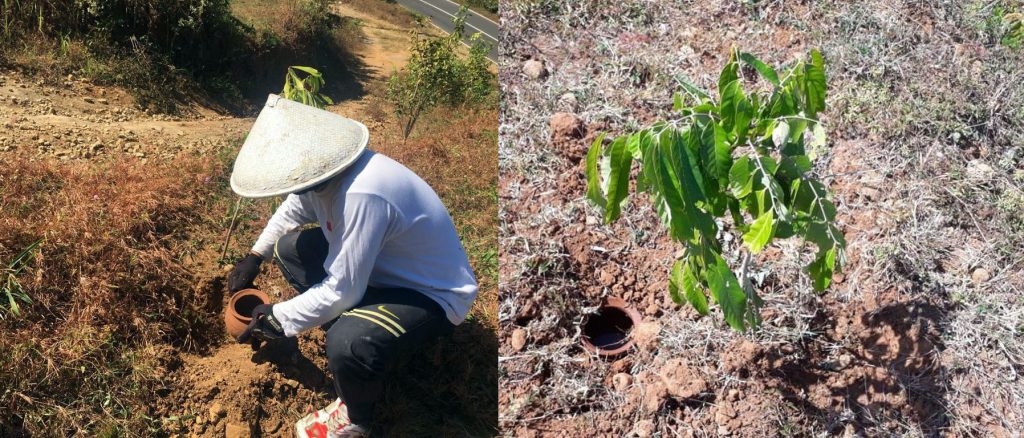
For a sustainable future
Working with global and local communities to educate and build systems to support lifestyles and livelihoods, while also protecting the natural environment, the Yanmar Environmental Sustainability Support Association will continue its activities to develop sustainable technologies that fulfill Yanmar’s mission to realize sustainable prosperity in harmony with a sustainable natural environment. “Delivering sustainable solutions has always been a part of Yanmar’s DNA,” says Osamu Sugano from YESSA. “Through projects like this, we want to lead the way in showing new ways to live sustainably in the 21st century.”
References
1: Badan Pusat Statistik (BPS) DIY
2: WHO/UNICEF Joint Monitoring Program 2017
3: WHO






















